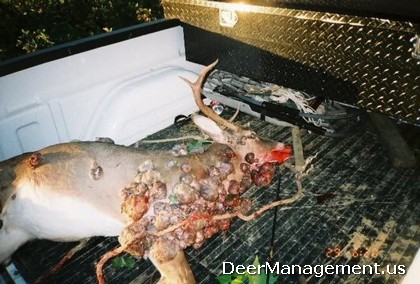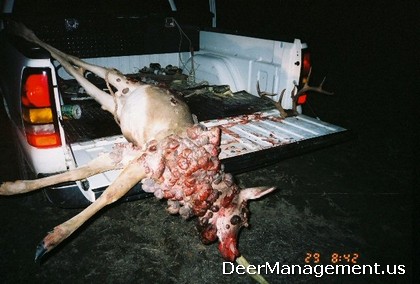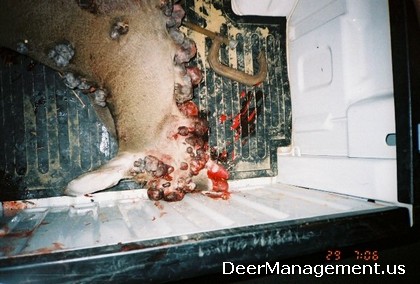White-tailed deer can get many types of deer diseases. Whether caused by a disease or a virus, some of these ailments can look quite displeasing. A common thing with whitetail is warts. Wart-like growths found on the skin of white-tailed deer and other members of the deer family are fibromas. They are popularly referred to as skin tumors, or simply warts. They are not cancer, but most people imagine cancer as some type of elephant-man like occurrence. Not so. Fibromas, often referred to as deer tumors, can look pretty nasty.

Biologist identify the different skin tumors from deer as papillomas, fibromas, or papillofibromas depending upon the type of tissue making up the tumor. However, there is evidence that skin tumors common to whitetail deer are caused by just one type of virus, the papillomavirus, so the term fibroma will be used to refer to all types of warts and tumors. The disease occurs throughout the whitetail’s range in North America.

Research has found that fibromas are most common on deer 2 1/2 years old and older, and bucks seem to be much more susceptible to the disease. Fibromas are typically observed as firm, tumor-like masses attached only to the skin. They can vary in size and get up to four inches in diameter. All fibromas, warts, etc. are fleshy. Some are covered with gray or dark skin which often is scratched and bleeding. Others have a black, dry, hard surface that may be fissured much like the head of a cauliflower. They are all pretty darn gross.

Fibromas are randomly found on an infected deer’s body, but occur most frequently about the eyes, neck, face, and on the front legs. They may be single or multiple. In fact, a heavily infected deer may have 30 or more of the “cancer-like” nodules.

The transmission of the papillomavirus occurs through direct contact with warts or lesions of an infected deer that contain virus particles. Transmission of the deer disease may also result when infective lesions are abraded by vegetation that is subsequently in contact with uninfected hosts. In addition, insect bites may also transfer the virus from deer to deer. Most lesions (70 percent plus) regress within a matter of months, but some deer can become covered. There is nothing that can be done to control papillomavirus, but it is believed that most deer get infected at an early age and develop immunity.
In deer, they may not be malignant. But the virus may cause malignancy in humans once introduced into the new host’s pH. When a virus jumps species, the new electro-chemical environment causes unknown gene expressions that may lead to malignancy. There are hundreds of peer-reviewed published papers on this topic.